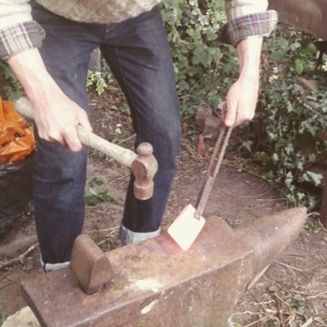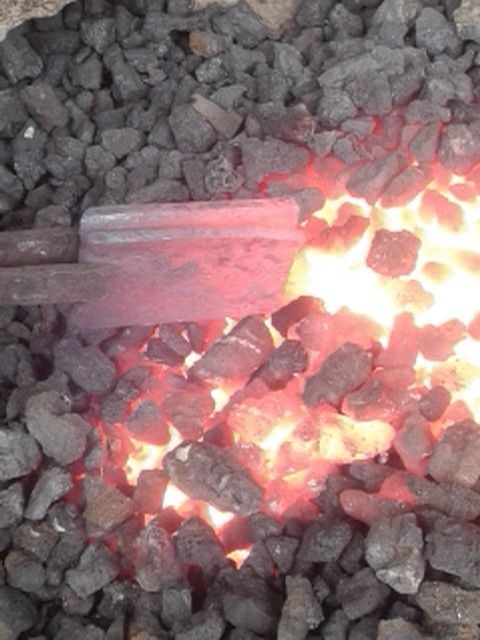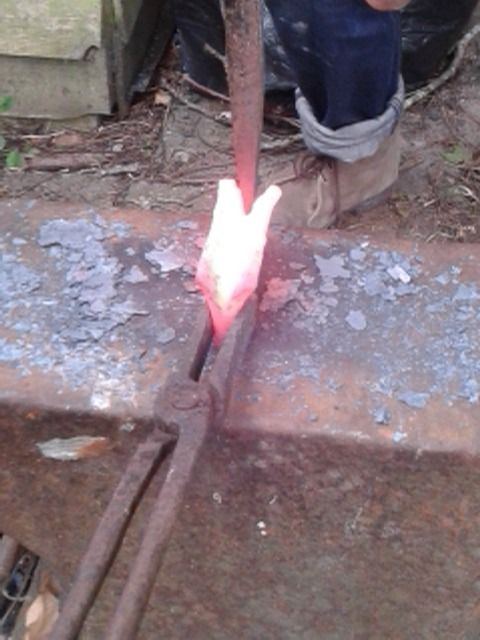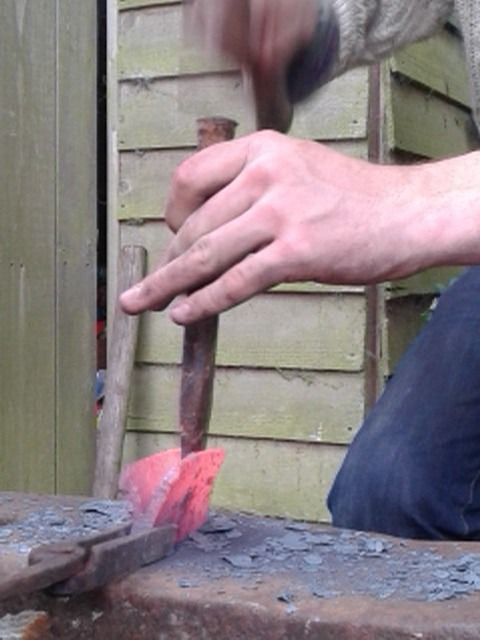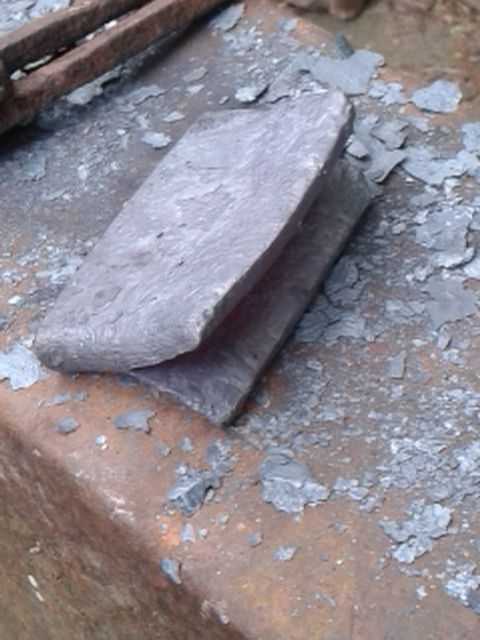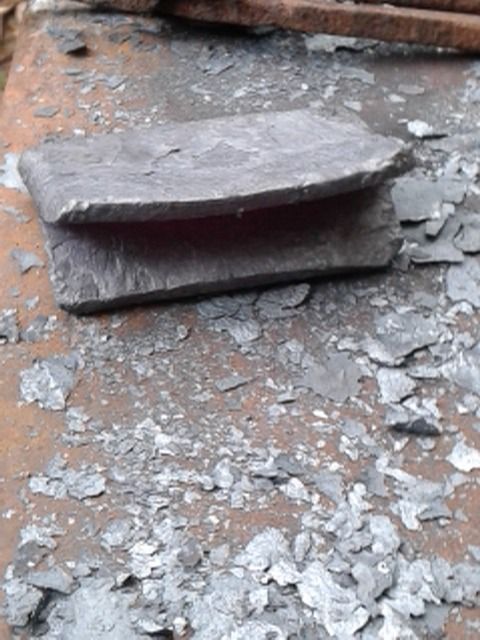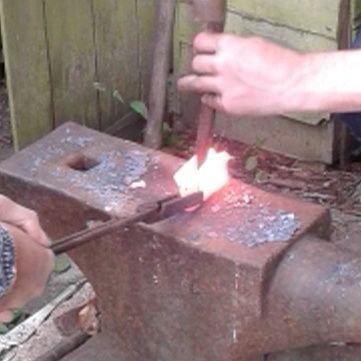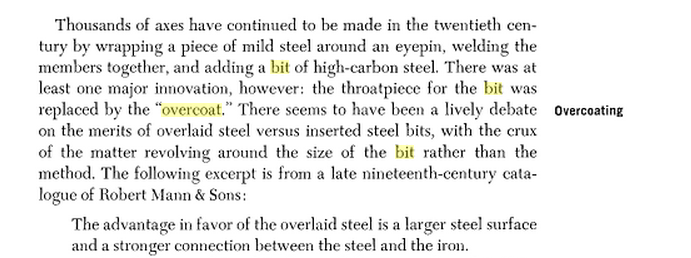most likely by that time it was just habit.
Pre-20th century it was still cheaper to laminate tools and weld edges in than to buy the whole amount of steel. Also, depending on how you are set up machine wise, the mild steel/wrought iron is easier to work with due to being softer and more forgiving of working temperatures.
The whole construction method that they use is well suited to the tooling that they have, or vice versa. Punching an eye through a solid block requires heavy stock to be handled (both in terms of the 4m length at the start and the 3kg lump at the forge) and a punch must be driven through before drifting; this can be quick but if you cock it up then it is not easily corrected, so doing this into expensive and hard tool steel would be risky. So a power hammer that comes down verticaly (like the one on the poll not the trip hammer) but with a heavy blow (unlike the poll hammer) o a hydraulic press would be needed in a production set up.
The method that they use for making the body allows them to buy in one size of soft iron and forge it to the correct dimensions for a range of axe designs without much wasted time compared to the same with a hard steel billet, the same is true for their choice of edge steel stock (larger edges just get a longer length of steel cut off at the start). The other advantage of the wrapping over punching is that the shape and size of the eye are mostly formed without having to stretch the hole to size with a drift. The little drift that they do use is mostly there to support the eye as the cheeks are drawn out and to tidy the shape up a bit. Again a punched eye would require more power to drift the eye to shape. As to why they choice to wrap rather than split and insert an edge, goodness knows! Most likely it was how the founding smith liked to do it and the process became their trademark.
As the 20th century wore on, good steel became so much cheaper that it was less costly to use and waste it than the extra fuel and time taken to do it the old way. Chances are that they went out of business because the hadn't moved with the times fast enough and their competitors had long since given up on the idea of seperate edges.
I make smaller axes from a single piece by punching the eye and then larger axes by welding edges into/onto mild bodies. I do it that way because it is simpler and faster for me to make an axe by punching a good lump, but as I do it all by hand (no big power toys to help) once the block gets about a certain size, it is just too much hard work. So for larger axes I use mild steel that is softer to move (and punch the hole in) before sticking a good steel edge in. It also means that I can buy a couple of different sizes of cheap mild (or get some 1" plate flame cut into the right size/shape by a friendly fabricator who has it in stock) and not have to buy several dimensions of steel that would take me 5 years to work through a 4m length of. I've also been known to weld several bits of mild together before sticking an edge in, simply because it was the only way to make up the size or shape that I wanted (such as that Dane Axe I did for Wayland a while back).
